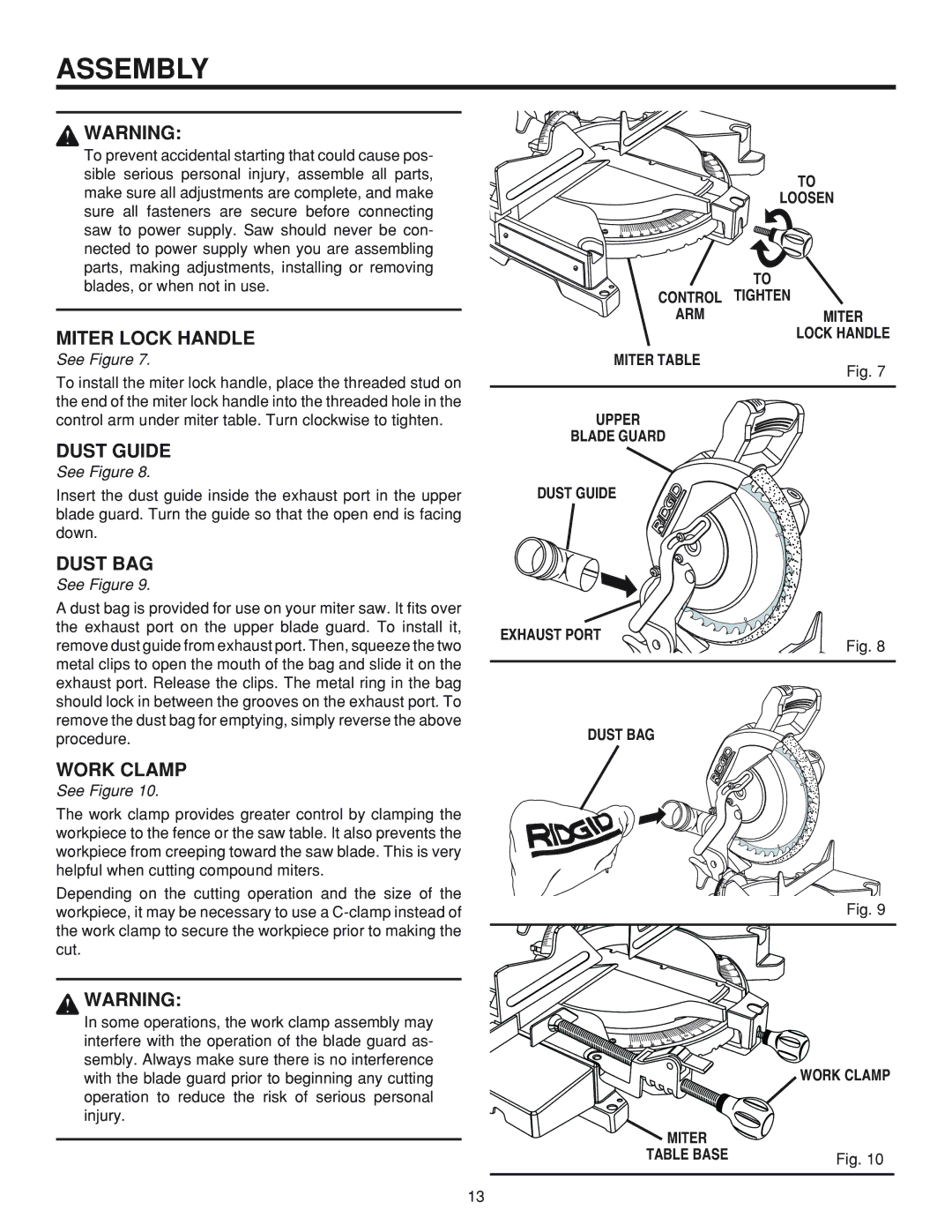
ASSEMBLY
![]() WARNING:
WARNING:
To prevent accidental starting that could cause pos- sible serious personal injury, assemble all parts, make sure all adjustments are complete, and make sure all fasteners are secure before connecting saw to power supply. Saw should never be con- nected to power supply when you are assembling parts, making adjustments, installing or removing blades, or when not in use.
MITER LOCK HANDLE
See Figure 7.
To install the miter lock handle, place the threaded stud on the end of the miter lock handle into the threaded hole in the control arm under miter table. Turn clockwise to tighten.
DUST GUIDE
See Figure 8.
Insert the dust guide inside the exhaust port in the upper blade guard. Turn the guide so that the open end is facing down.
DUST BAG
See Figure 9.
A dust bag is provided for use on your miter saw. It fits over the exhaust port on the upper blade guard. To install it, remove dust guide from exhaust port. Then, squeeze the two metal clips to open the mouth of the bag and slide it on the exhaust port. Release the clips. The metal ring in the bag should lock in between the grooves on the exhaust port. To remove the dust bag for emptying, simply reverse the above procedure.
WORK CLAMP
See Figure 10.
The work clamp provides greater control by clamping the workpiece to the fence or the saw table. It also prevents the workpiece from creeping toward the saw blade. This is very helpful when cutting compound miters.
Depending on the cutting operation and the size of the workpiece, it may be necessary to use a
![]() WARNING:
WARNING:
In some operations, the work clamp assembly may interfere with the operation of the blade guard as- sembly. Always make sure there is no interference with the blade guard prior to beginning any cutting operation to reduce the risk of serious personal injury.
TO
LOOSEN
| TO |
CONTROL | TIGHTEN |
ARM | MITER |
| LOCK HANDLE |
MITER TABLE
Fig. 7
UPPER
BLADE GUARD
DUST GUIDE
EXHAUST PORT
Fig. 8
DUST BAG
Fig. 9
| WORK CLAMP |
MITER |
|
TABLE BASE | Fig. 10 |
|
13
